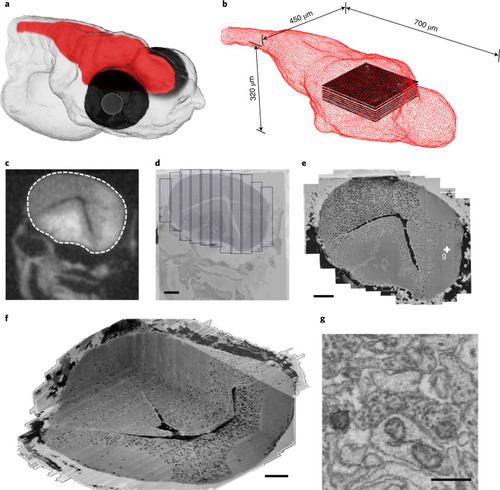|
Mapping and EM-based reconstruction of functionally characterized pretectal neurons.a, Single plane of GCaMP5G fluorescence registered to SBEM dataset. b–d, Zoomed view of data in a, showing GCaMP5G (b) and scanning EM image (c) individually and as overlay (d). e–i, Panels show tracings seeded from soma centers (n = 208) (e), with functional response types classified and named as in ref. 25, neurons skeletonized from those seeds (f), axons (g), dendrites (h) and two individual example neurons (i), for all of the functionally characterized, EM-reconstructed cells, colored by functional response type. Blue and red spheres in i indicate incoming and outgoing synapse locations, respectively. j, All synapse locations with traced (blue) and untraced (black) postsynaptic partners. MoNL, MoNR, MoTL and MoTR refer to monocular nasalward (N) or temporalward (T), left eye (L) or right eye (R). FEL, FER, BEL, BER refers to forward- (F) or backward- (B) selective, excited by left (L) or right (R) eye. FELR refers to forward-selective, excited by left and right eye. FSP and BSP refer to forward (F) or backward (B) specific. Scale bars, 50 μm (a), 5 μm (b–d) and 100 μm (e–j).
|






